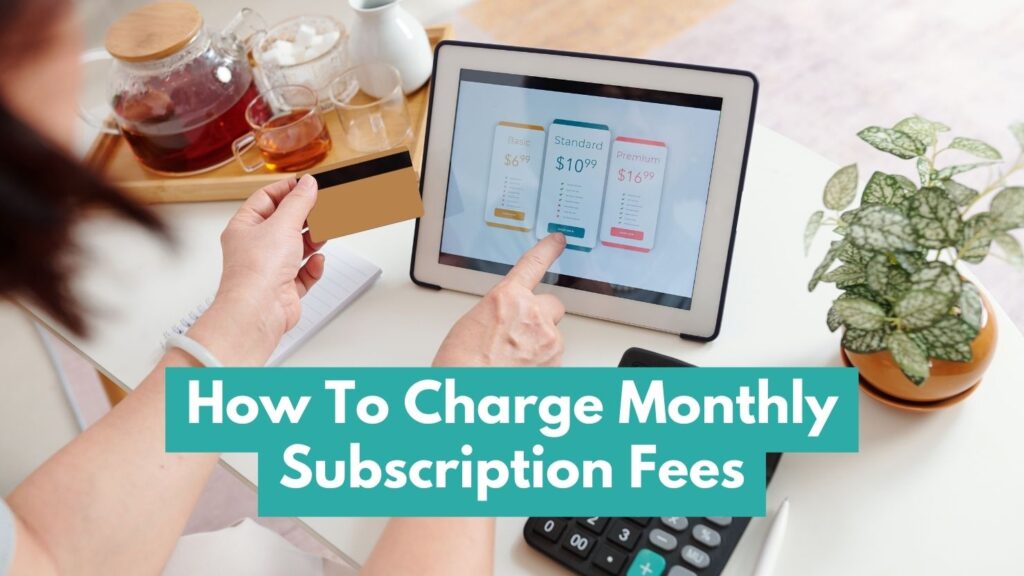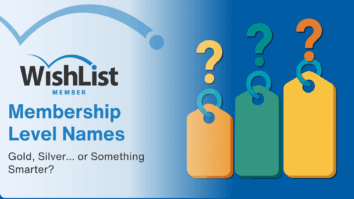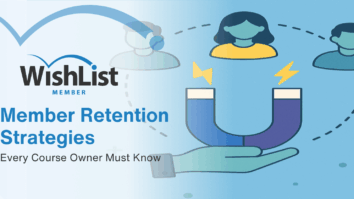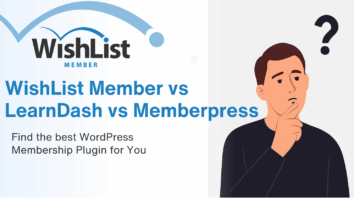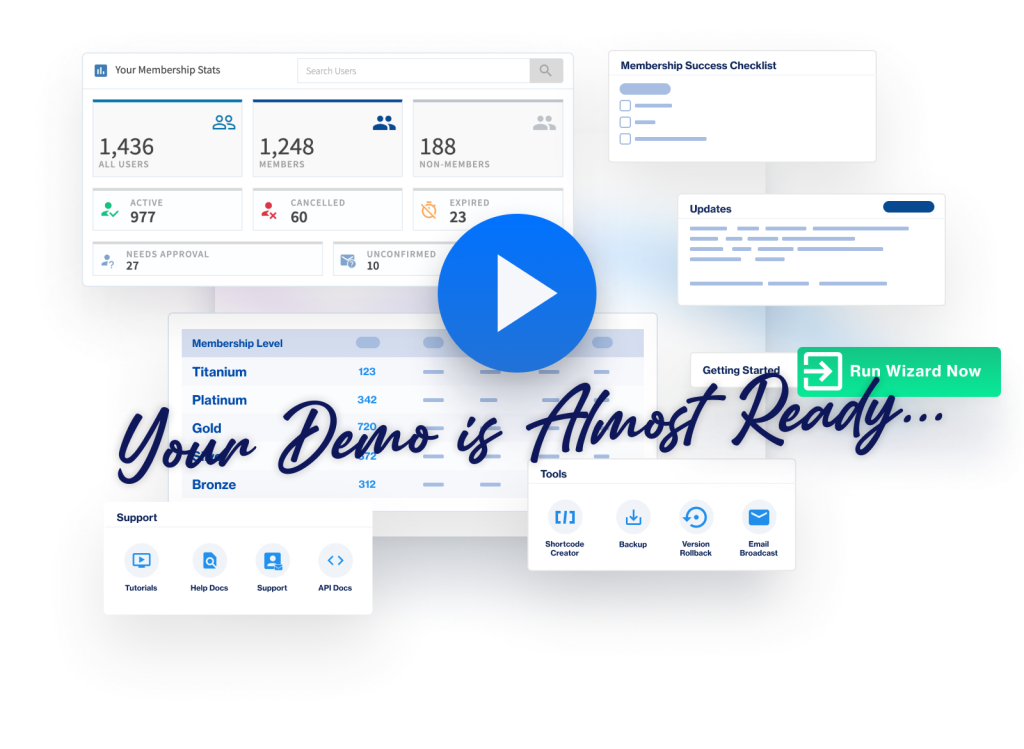If you're running a small business, you might feel the pinch of unpredictable earnings, particularly if your income mostly comes from one-off sales or irregular contracts. But that can change for the better with a monthly recurring charge!
Contents
Charging monthly subscription fees is a smart move for any business looking to secure a steady income stream. Switching to a subscription model will not only ensure a steady income for you but also make the payment procedure hassle-free for your users. You'll know exactly what's coming in each month, making it easier to plan ahead, budget effectively, and reinvest in your business.
In this article, we'll guide you through setting up automatic recurring charges for your online course. Keep reading to keep your income stream steady so you can focus more on growth.
What Is a Monthly Recurring Charge?
Monthly subscription fees are charges that customers pay regularly, usually each month, to gain access to a product or service. This model ensures that revenue flows into your business at consistent intervals. Subscription-based businesses are becoming more popular because of their perks like steady income, less initial investment, growth opportunities and more!
But how does it actually work?
Simply put, customers sign up once, and their payment method is automatically charged on a recurring basis until they decide to cancel. This automatic renewal keeps the process smooth both for you and your customers.
Benefits of Setting Up Monthly Recurring Charge?
Implementing a monthly recurring fee can seem like an ideal strategy for generating a stable income. When it works well, it can significantly enhance your cash flow. But that's not all that monthly recurring fees can help with. Here are a few key benefits you can enjoy from monthly recurring fees.
Convenience for customers: Customers appreciate the convenience of automatic billing. They don’t have to worry about making manual payments, and you can reduce the risk of late or missed payments.
Opportunities for upselling: A recurring payment model creates opportunities to upsell additional features or services to existing subscribers, further increasing revenue.
Lower customer acquisition costs: Retaining customers through recurring charges is often more cost-effective than acquiring new ones, which will help improve overall profitability.
Scalability and business growth: Monthly subscriptions allow businesses to scale efficiently by acquiring more subscribers without significantly increasing operational costs.
Increased business valuation: Companies with recurring revenue models often have higher valuations, as investors see predictable income as a sign of stability and growth potential.
Best Practices for Setting Up Monthly Recurring Charges
Now that you know how beneficial recurring fees are for your business, it's understandable if you can't wait to set it up! But we'd want you to prepare for success, and that brings us to the best practices. While recurring charging model is super effective, it comes with its challenges too. And being familiar with the best practices will help you ensure the right model for your business.
1. Understand Your Target Audience
Before launching a recurring billing model, it’s crucial to understand your audience’s needs, preferences, and behaviors. Conduct market research to determine what features or services your users value most and their willingness to pay. Customer personas can help you align your offerings with their expectations.
Knowing your audience ensures that your pricing strategy resonates with them and attracts long-term subscribers. On the flip side, if you run a subscription model without understanding your users' needs, you'll end up losing more users than retaining them!
2. Choose the Right Pricing Strategy
Your pricing strategy can make or break your subscription model. Consider different approaches such as:
- Tiered pricing: Offer multiple plans with varying features or limits. This gives customers the flexibility to choose based on their needs.
- Flat rates: Simplify the decision process by charging all customers a fixed monthly fee.
- Usage-based charges: Charge based on how much of your service or product is consumed.
You don't necessarily have to stick to these pricing models. Rather, based on your users and their willingness to pay for your service, you can devise a recurring payment model that works better for your business.
3. Provide Clear and Transparent Terms
Set clear expectations for your customers from the start. Communicate all the details about:
- Billing cycles (e.g., monthly or annual).
- Refund and cancellation policies.
- Any additional or hidden fees.
Credibility is the key to success in the subscription-based business world, and you can't prosper without being transparent about everything. Transparency builds trust and helps avoid disputes or dissatisfaction. Include this information in your terms of service, checkout page, and confirmation emails.
4. Use Reliable Billing Software
A robust and reliable billing system is the backbone of any subscription model. Choose software that automates recurring payments, tracks invoices, and handles failed transactions. Features to look for include:
- Automated reminders for upcoming payments.
- Secure storage of payment information.
- Support for multiple currencies.
The billing software that offers these features will automate your administrative tasks so you can focus more on important tasks like content management, lead generation, and branding.
5. Offer Multiple Payment Options
Flexibility in payment methods can significantly improve your conversion rates. Offer a variety of options, such as credit/debit cards, bank transfers, PayPal, and digital wallets. Additionally, consider supporting global payment methods if you cater to an international audience. The easier you make it for customers to pay, the more likely they are to subscribe and keep paying for your services.
6. Implement a Trial Period or Freemium Model
Many customers hesitate to commit without first experiencing the value of your offering. That's why giving them a taste of your product or service for free is an excellent idea to get them hooked. You can also generate leads while at it.
By providing a free trial or a limited freemium version, you give users a risk-free opportunity to explore your service. Ensure that the trial showcases your best features and makes it easy for users to transition into paid plans once it ends.
7. Make Cancelling Easy
Making it easy for customers to cancel their subscriptions might seem counterintuitive, but it fosters trust and goodwill. If customers feel trapped, they’re more likely to leave negative reviews or avoid returning in the future. A simple cancellation process shows confidence in your product and leaves a positive impression, even if a customer decides to leave.
And as long as your offer provides value, you have nothing to worry about, right?
8. Focus on Customer Support
Exceptional customer support can turn dissatisfied customers into loyal advocates. Ensure your support team is easily accessible and trained to promptly handle billing issues, technical problems, or service-related queries. To cater to different customer preferences, offer multiple support channels, such as live chat, email, and phone.
9. Test and Refine the Model
Your initial subscription model may need adjustments as you gather data and feedback. Periodically test new pricing strategies, feature bundles, or billing frequencies to see what works best. Use A/B testing and customer feedback to refine your offerings and meet market demands.
The more trendy you are, the more fine-tuned pricing models you can develop. These pricing models will help your users choose your product or service over your competitors.
10. Ensure Compliance with Legal and Tax Requirements
Recurring billing involves handling sensitive customer data and complying with various laws. Ensure that your payment systems adhere to data protection regulations like GDPR or CCPA. Be aware of tax implications for subscription services in different regions and implement processes for accurate tax collection and reporting. Partnering with a legal or tax advisor can help you avoid costly mistakes.
Features Needed to Set up Monthly Recurring Charges
Various tools are available on the Internet that offer the features needed to set up monthly recurring fees. But if you don't want to settle for the basics, we've got just the right tool for you.
WishList Member is an excellent tool for organizing and maximizing a monthly subscription model, thanks to its comprehensive features explicitly designed for membership site management. Here are the key features that make WishList Member particularly suited to this goal:
Flexible Membership Levels
WishList Member allows you to create unlimited membership levels, offering you the flexibility to tailor your subscription offerings. You can set different access levels, prices, and durations to cater to diverse customer needs. This feature lets you gradually release content to members over time, which can help maintain member engagement and reduce churn.
Seamless Payment Integrations
WishList Member integrates with various payment gateways, including PayPal, Stripe, and others, facilitating the easy setup of recurring payments. Members can easily upgrade or downgrade their subscriptions based on their needs, which enhances user experience and satisfaction.
Content Protection
You can protect your content at various levels – categories, files, posts, and pages – ensuring that only the right membership levels can access premium content. On top of that, it offers a preview of premium content to non-members to entice them to subscribe, improving conversion rates.
Integrations with Other Tools
Integration with popular email marketing tools like MailChimp, ConvertKit, and ActiveCampaign allows you to send targeted communication, from welcome emails to payment reminders. Plus, you can also enjoy Integration with analytics tools, which help you understand member behavior and refine your marketing strategies.
Automated Admin Functions
Set up auto-renewals to ensure uninterrupted access for users and reduce manual administrative work. Automate the cancellation process, making it easy for users to manage their subscriptions and for you to maintain accurate records.
How To Set Up Monthly Recurring Charges Using WishList Member: 3 Easy Steps
Setting up recurring charges with a WishList member is easier than anything else. It allows you to set the whole procedure on autopilot, allowing you to focus more on other important things. Let's see how you can set up monthly recurring charges with just a few steps.
Step 1: Download and Install WishList Member
First, go to WishList Member plans and choose the perfect plan for you. Then, go to your WordPress dashboard and click on Plugins. On the next page, click on Add New Plugin.
Then, hit the Upload Plugin button and choose the zip file you downloaded from the WishList Member website.
Step 2: Set Up Your Membership Levels
- Go to WishList Member on your WordPress dashboard.
- Navigate to Setup and then choose Levels.
- Here, you can create new membership levels or edit existing ones, setting the terms for access but not the billing directly.

2. Integrate with a Payment Gateway
- Within WishList Member, go to Setup and select Integrations.
- Click on the Payment Providers tab.
- Choose from supported payment gateways such as PayPal, Stripe, or others that facilitate recurring payments. You must set up these services outside of WishList Member to handle the billing and subscription logic.
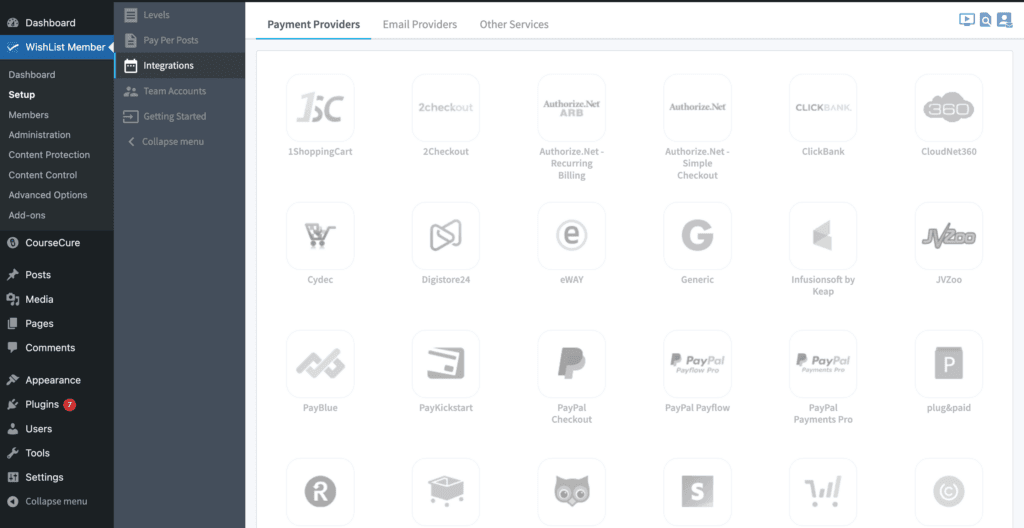
3. Configure the Payment Gateway for Recurring Payments:
- Follow the specific instructions for your chosen payment gateway to enable recurring billing.
- Link these settings back to the membership levels you have configured in WishList Member to ensure that payments are processed according to the membership terms.
Before going live, test the payment process thoroughly to confirm that the recurring billing functions as expected and that user access is not disrupted. And there you have it! With WishList Member, you facilitate easier payments while optimizing your membership site for continuous growth and member satisfaction.
Which Integrated Payment Platform Should You Use?
Choosing the best integration for managing subscription payments depends on several factors, including your specific business needs, the geographical location of your customers, and the specific features you require.
Here’s a breakdown of some popular integrations and what makes each potentially the best option for different scenarios:
- Stripe:
- Best for: Ease of use, modern API, and comprehensive feature set.
- Features: Supports recurring payments, automatic card updates, and handles multiple currencies. Stripe is renowned for its robust security, straightforward pricing, and excellent customer experience.
- PayPal:
- Best for: Wide acceptance and trust among consumers.
- Features: Offers PayPal Standard and PayPal Express Checkout, both of which support recurring payments. It's particularly useful if you have a broad customer base that prefers PayPal as a payment method.
- Authorize.net:
- Best for: Businesses needing a reliable and secure payment gateway.
- Features: Supports recurring payments and includes advanced fraud detection services. It’s a great choice if security is a high priority for your business.
- Infusionsoft by Keap:
- Best for: Businesses that require both payment processing and CRM capabilities.
- Features: Offers robust CRM tools alongside recurring payment support, making it ideal for businesses looking to manage customer relationships and payments within a single platform.
- ThriveCart:
- Best for: Maximizing conversions through optimized checkout processes.
- Features: While primarily a cart solution, ThriveCart offers strong support for subscription management, affiliate marketing, and upselling capabilities.
- ClickBank:
- Best for: Businesses that also want to leverage an affiliate network.
- Features: Supports recurring billing and provides access to an extensive affiliate network to help drive sales and increase visibility.
Marketing Strategies for Your Monthly Recurring Charge Model
When it comes to subscription marketing, attracting new subscribers is just the first step. The real challenge lies in increasing retention and reducing churn. Here are some effective strategies that can help:
1. Offer Incentives for Advance Payments
Encourage your customers to commit to your brand long-term by offering annual subscription options. This not only ensures their continued engagement but also provides your business with a stable revenue base.
You can also consider offering a discount or a free month to encourage upfront payment for the year. Highlight the value of these plans through direct comparisons, showing customers the benefits and savings they gain, similar to what Fabfitfun does with their annual subscriptions.
2. Create a Sense of Exclusivity
Create a subscription model with limited spots to enhance the exclusivity and allure of your service. For example, the Coca-Cola Insiders Club offered exclusive access to new products and swag for a limited number of members, and due to high demand, it filled up quickly. Provide special discounts or exclusive products to members only, enhancing the perceived value of the subscription.
3. Leverage Referrals
Happy customers are the best advocates for your brand. Encourage them to refer friends and family in exchange for rewards, free courses, ebooks, etc. This referral scheme will get more people to sign up for your recurring subscription, boosting the overall growth of your business.
4. Reward Long-term Loyalty
Regularly acknowledge and reward your loyal customers. Whether through discounts, special offers, or freebies, make sure the rewards are meaningful. For example, if a user has been subscribed to your service for over a couple of years, you can give them a certain percentage off on their renewal.
Is Monthly Recurring Charge the Ultimate Solution for Your Business?
To wrap up, we’ve covered essential strategies and best practices for effectively setting up and managing monthly subscription fees. Utilizing these techniques can help stabilize your revenue, enhance member engagement, and ensure your business thrives in the competitive online landscape.
But it's ultimately your call, and we hope our blog has helped you understand whether monthly recurring fees will be a great fit for your business. If you decide to try a recurring fee-based model, don't forget to try WishList Member.
Enjoyed this article? Follow us on Twitter, Facebook, YouTube, and LinkedIn. Plus, get notified about feature updates, upgrades, and more when you subscribe to our newsletter!
